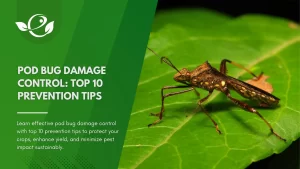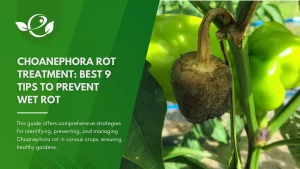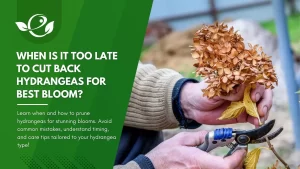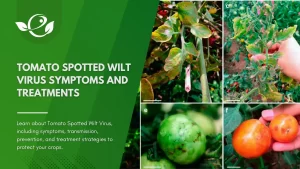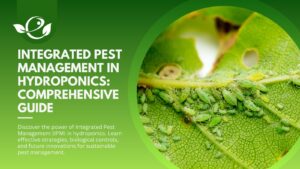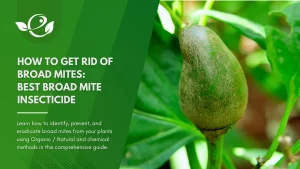Table of Contents
In the lush green fields of tobacco, where the air is thick with the promise of a bountiful harvest, a hidden menace lurks among the leaves. Tobacco caterpillars, with their voracious appetite, can turn a healthy crop into a tattered shadow of its former self in a matter of days. These tiny, yet formidable pests have long been the bane of farmers, gnawing away at the very livelihood of those who cultivate not only tobacco but a variety of other vital crops.
The struggle to control tobacco caterpillars is as old as agriculture itself, yet it remains a significant challenge. With each passing season, farmers find themselves in a delicate dance, balancing the need to protect their crops with the desire to do so in an environmentally responsible way. This article is your guide through that dance—a comprehensive resource for understanding, identifying, and controlling tobacco caterpillars using a variety of methods, from traditional cultural practices to cutting-edge biological controls.
Whether you are a seasoned farmer looking to refine your pest control strategies, or a novice gardener facing the devastation of caterpillar infestation for the first time, this guide will equip you with the knowledge and tools needed to defend your crops against this persistent pest.
Identifying Tobacco Caterpillars
Life Cycle of Tobacco Caterpillars
Understanding the life cycle of tobacco caterpillars is the first step in effective control. These pests, scientifically known as Spodoptera litura, go through a complete metamorphosis consisting of four distinct stages: egg, larva (caterpillar), pupa, and adult moth.
- Egg Stage: The female moths lay their eggs on the underside of leaves in clusters. These eggs are tiny, spherical, and yellowish-white, hatching within a few days.
- Larval Stage: Upon hatching, the larvae begin feeding voraciously on the leaves. This stage lasts for about two to three weeks, during which the caterpillars molt several times, growing larger and more destructive with each stage. The larvae are typically greenish-brown with dark stripes running down their bodies, and they can reach up to 4-5 cm in length.
- Pupal Stage: After feeding, the caterpillars drop to the ground and burrow into the soil, where they form pupae. The pupal stage lasts for about a week to ten days, depending on environmental conditions.
- Adult Moth Stage: Finally, the adult moth emerges from the pupa. These moths are brownish with distinctive patterns on their wings, and they are active at night. The cycle then repeats as the moths mate and lay eggs, starting the process anew.

What caused it?
Symptoms are caused by the larvae of Spodotpera litura. Adult moths have greyish-brown bodies and variegated forewings with white wavy markings on the edges. The hindwings are translucent white with brown lines along the margins and the veins. Females lay hundreds of eggs in clusters on the upper leaf blades, covered with golden brown scales.
After hatching, the hairless light-green larvae disperse quickly and start feeding gregariously on leaves. Older larvae are dark green to brown with dark spots on the flanks and somewhat clearer bellies. Two yellow longitudinal bands run along the sides, interrupted by black triangular spots. An orange band runs dorsally between these spots. Larvae feed during the night and take refuge in the soil during the day. Larvae and adults thrive at temperatures between 15°C and 35°C, optimum at 25 °C. Low humidity and higher or lower temperatures reduce fertility and prolong their life cycle.
Common Crops Affected
While tobacco caterpillars are most notorious for attacking tobacco plants, they are highly polyphagous, meaning they feed on a wide range of plants. Some of the most commonly affected crops include:
Apple, Banana, Bean, Bitter Gourd, Cabbage, Cauliflower, Chickpea & Gram, Citrus, Coffee, Cotton, Cucumber, Brinjal, Garlic, Ginger, Black & Green Gram, Grape, Guava, Maize, Mango, Cassava, Millet, Okra, Onion, Peanut, Capsicum & Chilli, Pigeon Pea & Red Gram, Pomegranate, Potato, Rice, Rose, Sorghum, Soybean, Strawberry, Sugar, Beet, Sweet, Potato, Tobacco, Tomato, Turmeric, Wheat.
Regular monitoring of these crops, especially during the growing season, is critical to catching an infestation early.
Tobacco caterpillar damage symptoms
Early detection of tobacco caterpillar infestation is crucial for effective control. Regular monitoring of crops is essential to catch these pests before they cause significant damage. Here are the key signs to look for:
- Chewed Leaves: One of the most obvious signs of tobacco caterpillars is the presence of chewed leaves. The caterpillars typically feed on the edges of the leaves, leaving behind irregularly shaped holes.
- Egg Clusters: Checking the underside of leaves is important, as this is where female moths lay their eggs. Finding clusters of eggs can indicate an impending infestation.
- Frass (Caterpillar Droppings): Caterpillar droppings, or frass, are small, dark pellets that can often be found on the leaves or ground beneath infested plants. The presence of frass is a clear sign that caterpillars are feeding on your crops.
- Flower buds and pods are also attacked and show feeding holes. In lighter soils also the roots become damaged. Due to extensive feeding, only petioles and branches are left behind.

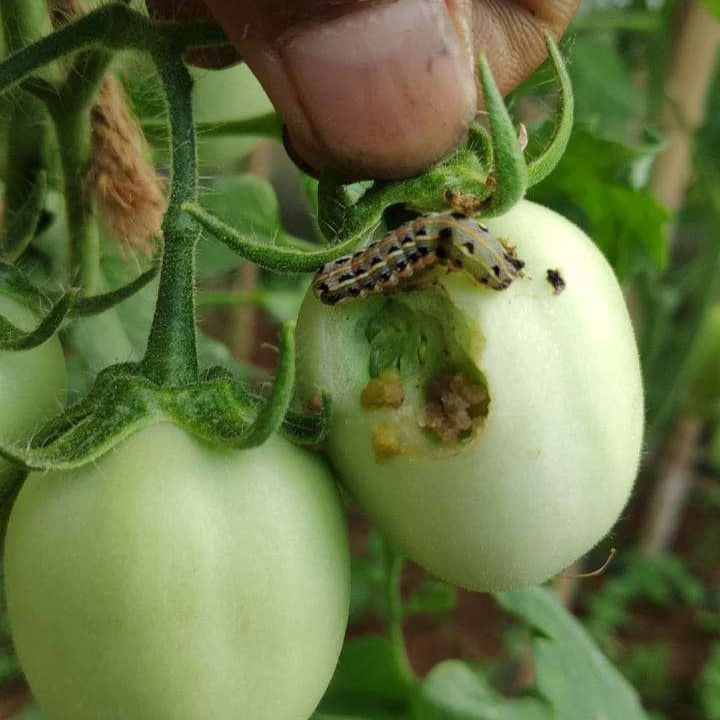
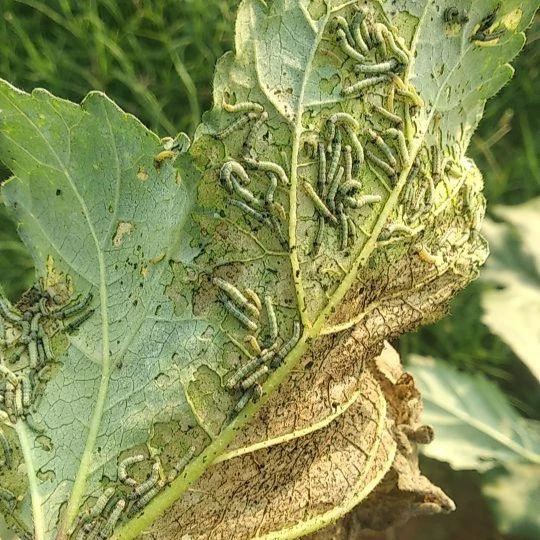
Prevention Strategies of Tobacco Caterpillars
Preventing tobacco caterpillar infestations is far more effective and less costly than dealing with an established problem. There are several strategies that can be employed to keep these pests at bay.
- Use tolerant varieties if available.
- Sow early to avoid peaks in insect populations.
- Irrigate regularly to avoid prolonged mid-season drought.
- Plant trap crops like sunflower, taro and castor oil plant around and within fields.
- Plant repellent plants such as Ocimum spp (basilicum).
- Remove weeds 15-20 days after sowing.
- Bild bird perches in several places in the field.
- Use light or pheromone traps to attract the moths.
- Check your fields for signs of the disease such as egg masses, feeding damage or the presence of larvae.
- Collect and destroy egg masses and larvae from trap plants and host plants.
- Handle your plants carefully during cultivation and avoid plant damage and injuries.
- Take care of the hygiene of your tools and equipment.
- After harvest plow deep to expose the pupae to natural enemies and weather-related factors.
Biological Controls of Tobacco Caterpillars
Biological control involves using natural predators, parasites, and pathogens to manage pest populations. This method is environmentally friendly and sustainable, making it an excellent option for long-term pest control.
Recommendations:
We recommend following organic control methods in the early stages of a disease or when the crop is close to harvesting. In more advanced stages of a disease, please follow chemical control measures. Mixing or applying different products at the same time is not recommended.
Bioinsecticides based on Nuclear Polyhedrosis Virus (NPV) or Bacillus thuringiensis can be used on eggs and larvae. Bait solutions based on rice bran, molasses or brown sugar can be distributed on the soil in the evening hours. Plant oil extracts of neem leaves or kernels and extracts of Pongamia glabra seeds are highly effective against Spodoptera litura larvae. For example, azadirachtin 1500 ppm (5 ml/l) or NSKE 5% can be used during the egg stage and prevents the egg from hatching.
Natural Predators
Encouraging natural predators is an effective way to keep tobacco caterpillar populations in check. These predators can significantly reduce caterpillar numbers without the need for chemical interventions.
- Birds: Many bird species, such as sparrows and blackbirds, feed on caterpillars. Attracting these birds to your fields by providing perches or nesting sites can help control caterpillar populations.
- Predatory Beetles: Ground beetles and ladybugs are natural predators of caterpillar eggs and larvae. Creating a habitat that supports these beetles, such as by maintaining ground cover, can enhance their presence in your fields.
Beneficial Insects
Introducing or encouraging beneficial insects, such as parasitic wasps, can be an effective biological control method.
- Parasitic Wasps: Species like Trichogramma lay their eggs inside caterpillar eggs, preventing them from hatching. These wasps can be purchased and released in fields as part of an integrated pest management (IPM) program.
- Encouraging Native Beneficials: Planting flowering plants that attract beneficial insects, such as wasps and predatory beetles, can help maintain a healthy population of natural enemies.
Microbial Control
Microbial control involves using pathogens, such as bacteria, fungi, or viruses, to infect and kill pests. One of the most commonly used microbial agents against tobacco caterpillars is Bacillus thuringiensis (Bt).
- Bacillus thuringiensis (Bt): Bt is a naturally occurring soil bacterium that produces toxins harmful to caterpillars. When ingested by caterpillars, the toxins disrupt their digestive systems, leading to death.
- Application: Bt is available in various formulations, including sprays and dusts. It is most effective when applied during the early larval stages, as young caterpillars are more susceptible. Bt is safe for humans, animals, and beneficial insects, making it an ideal choice for organic farming.
- Considerations: While Bt is effective, it requires precise timing and application to ensure success. Regular monitoring of caterpillar populations is necessary to determine the best time for application.
Chemical Control Methods of Tobacco Caterpillars
When cultural and biological controls are insufficient, chemical controls may be necessary. However, these should be used as a last resort due to their potential impact on the environment and non-target species.
Always consider an integrated approach of preventive measures together with biological treatment if available. Extensive insecticide use can lead to resistance in the pest. To control the young larvae, several types of insecticides could be used, for example, products based on chlorpyrifos, emamectin, flubendiamide, chlorantraniliprole, indoxacarb or bifenthrin. Bait solutions also effectively reduce populations of older larvae.
Best insecticides For Tobacco Caterpillars
Select and apply only one of the products to your crops.

Ampligo by Syngenta
- Chlorantraniliprole 9.3%, Lambda-Cyhalothrin 4.6% ZC
- For Cabbage, Black & Green Gram
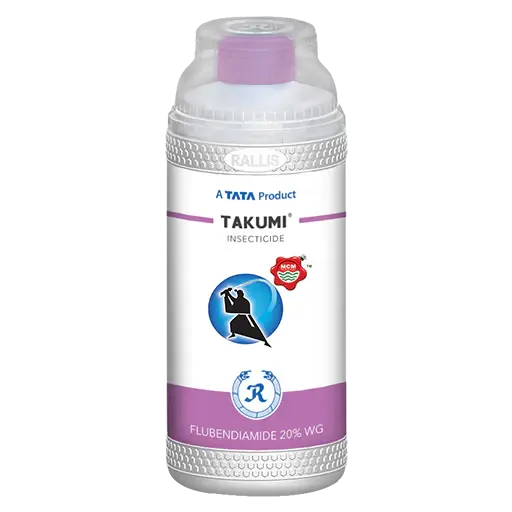
Takumi by Rallis Ind
- Flubendiamide 20.0% WG
- Spray
- For Black & Green Gram, Capsicum & Chilli
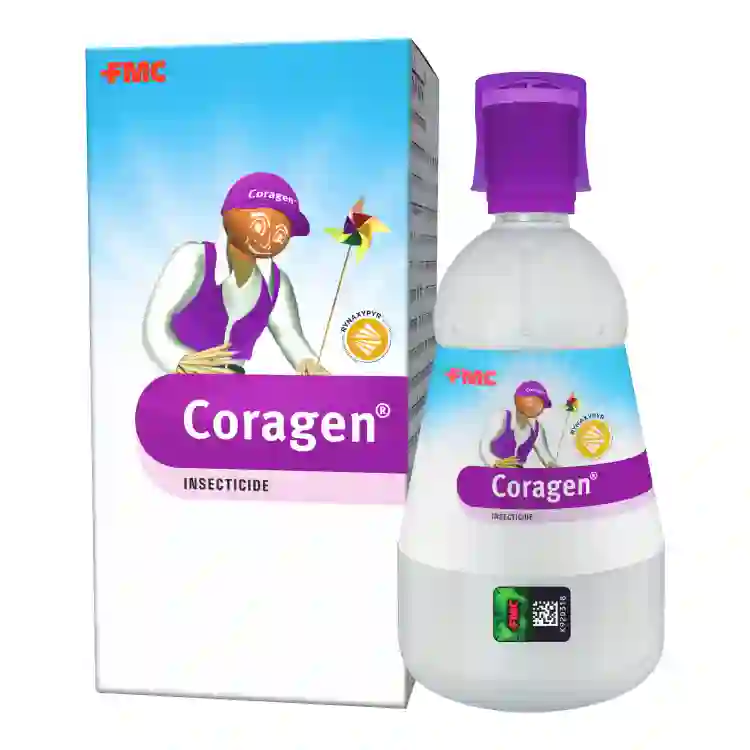
Coragen by FMC
- Chlorantraniliprole 18.5% SC
- Spray
- For Cotton, Bitter Gourd, Chickpea & Gram, Peanut

Benevia by DuPont
- Chlorantraniliprole 10.26% OD
- Spray
- For Okra, Cabbage, Cotton, Tomato
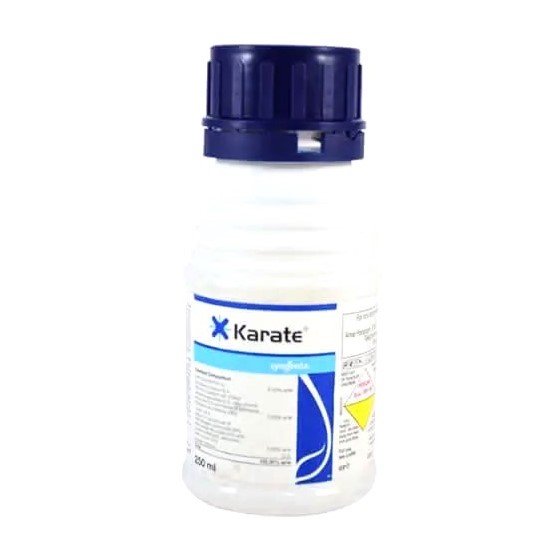
Karate by Syngenta
- Lambda-Cyhalothrin 5.0% EC
- Spray
- For Tomato, Chickpea & Gram, Cotton
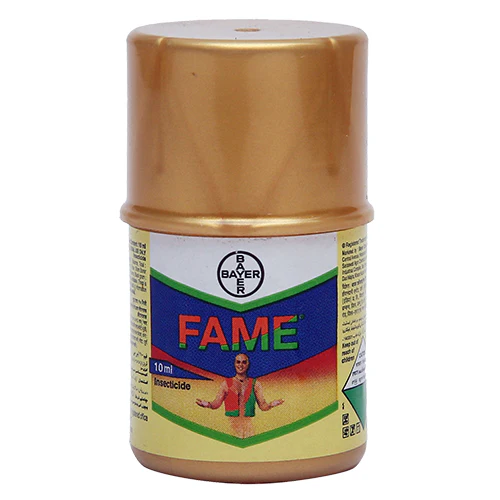
Fame by Bayer
- Flubendiamide 39.35% SC
- Spray
- For Peanut, Capsicum & Chilli, Soybean
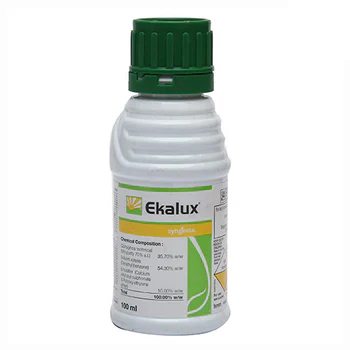
Ekalux by Syngenta
- Quinalphos 25.0% EC
- Spray
- For Pumpkin, Melon, Maize
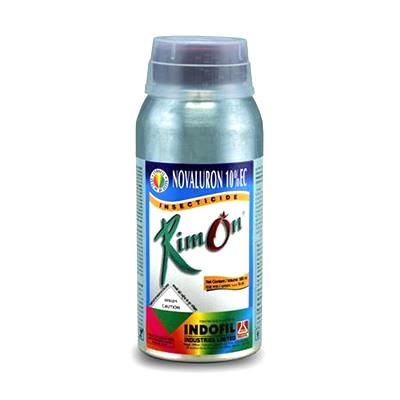
Rimon by Indofil
- Novaluron 10.0% EC
- Spray
- For Tomato, Capsicum & Chilli
Application Techniques
Proper application of insecticides is crucial for effectiveness and safety.
- Timing: Apply insecticides when caterpillar populations reach economic thresholds, meaning when the cost of crop damage exceeds the cost of control. Early morning or late afternoon applications are often more effective due to lower temperatures and reduced wind.
- Coverage: Ensure thorough coverage of the plants, especially the underside of leaves where caterpillars and eggs may be hiding. Use a fine spray to reach all parts of the plant.
- Safety Precautions: Always follow the label instructions for safe handling and application. Wear protective clothing and avoid applying insecticides on windy days to reduce the risk of drift.
Integrated Pest Management (IPM)
Integrated Pest Management (IPM) is a holistic approach that combines multiple methods to manage pests in a sustainable way. IPM aims to reduce the reliance on chemical controls and promote long-term pest management.
Combining Methods
The strength of IPM lies in its ability to integrate various control methods, making it more effective and sustainable.
- Cultural and Biological Controls: Start with preventive measures like crop rotation, intercropping, and encouraging natural predators. These methods help reduce the pest population and create a more resilient agricultural system.
- Chemical Controls: Use insecticides only when necessary, based on regular monitoring and pest thresholds. Apply chemicals in a targeted manner to minimize environmental impact.
- Continuous Monitoring: Regularly monitor your fields for signs of tobacco caterpillar activity. This allows you to catch infestations early and apply controls before the pest population becomes overwhelming.
Monitoring and Decision-Making
Effective IPM requires continuous monitoring and informed decision-making.
- Pest Thresholds: Establish economic thresholds for tobacco caterpillar populations. This means determining the point at which the cost of crop damage exceeds the cost of applying controls.
- Record Keeping: Keep detailed records of pest activity, control measures used, and their effectiveness. This information is valuable for making informed decisions in future seasons.
- Adaptation: Be prepared to adapt your IPM strategy based on the results of your monitoring and the effectiveness of your control measures. Flexibility is key to successful IPM.
Post-Infestation Management
Even with the best prevention strategies, infestations can still occur. When they do, it’s important to manage the aftermath effectively to minimize damage and prevent future outbreaks.
Recovery Strategies
If your crops have been damaged by tobacco caterpillars, there are steps you can take to help them recover.
- Pruning: Remove damaged leaves and plant parts to prevent further spread of pests and to redirect the plant’s energy toward healthy growth.
- Nutrient Support: Provide additional nutrients to help the plants recover from stress. This could include applying balanced fertilizers or compost.
- Irrigation: Ensure that the plants are well-watered, especially during hot and dry periods, to reduce stress and support recovery.
Preventing Future Infestations
After dealing with an infestation, it’s important to take steps to prevent future outbreaks.
- Field Sanitation: After harvest, remove all plant debris from the field to prevent overwintering of caterpillars and other pests.
- Soil Management: Consider practices such as deep plowing to bury pupae and disrupt the lifecycle of the caterpillars.
- Ongoing Monitoring: Continue to monitor your fields regularly, even during the off-season, to detect early signs of pests and take proactive measures.
Conclusion
Tobacco caterpillars are a formidable foe, but with the right strategies, they can be effectively controlled. By understanding their life cycle, recognizing the signs of infestation, and implementing a combination of cultural, biological, and chemical controls, you can protect your crops and ensure a healthy harvest.
Remember, the key to successful pest management is not just in reacting to infestations but in preventing them from occurring in the first place. Whether you are managing a small garden or a large farm, the principles outlined in this guide will help you stay one step ahead of tobacco caterpillars and keep your crops thriving.
If you have any questions or would like to share your own experiences with managing tobacco caterpillars, feel free to leave a comment below. And don’t forget to subscribe to our blog for more expert tips on pest control and sustainable farming practices.
FAQ
What is the host plant for the tobacco caterpillar?
The tobacco caterpillar (Spodoptera litura) has a wide range of host plants. It primarily targets crops such as tobacco, cotton, soybean, groundnut, tomato, cabbage, and many other vegetables and ornamental plants.
What is the scientific name of tobacco caterpillar?
The scientific name of the tobacco caterpillar is Spodoptera litura.
What is the nature of damage of tobacco caterpillar?
The tobacco caterpillar causes damage by feeding on the leaves of host plants, leading to defoliation. In severe infestations, it can also attack stems, flowers, and fruits. The caterpillars chew irregular holes in the leaves, and in the early stages, they may skeletonize the leaves, leaving only the veins intact. This damage can significantly reduce crop yields and quality.
What are the harmful effects of caterpillars?
Defoliation: Caterpillars eat leaves, reducing photosynthesis and weakening the plant.
Reduced Crop Yields: Heavy infestations can lead to significant yield losses in agricultural crops.
Fruit and Flower Damage: Some caterpillars feed on fruits and flowers, leading to direct economic loss.
Plant Death: Severe damage can lead to the death of young or already weakened plants.
Secondary Infections: The wounds created by caterpillars can open the plant to secondary infections by pathogens.
What is the early stage of a caterpillar?
The early stage of a caterpillar is the larval stage, which follows the egg stage in the life cycle of a moth or butterfly. During this stage, the caterpillar primarily focuses on feeding and growing, going through several molts before pupating and eventually transforming into an adult moth or butterfly.


